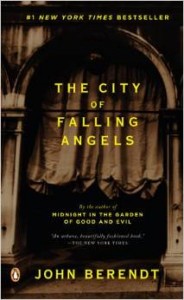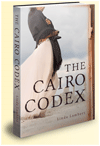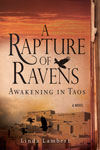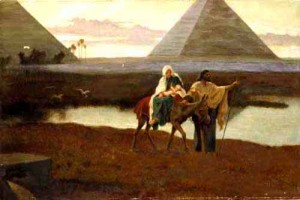Uncategorized
« Older EntriesBack and Still Learning
Thursday, April 14th, 2022
Hello Leaders—you may have wondered if I had moved to Timbuktu, lost interest in leadership and literature or died. None of these are true. I have been busy, distracted—whatever excuse I can muster to explain myself. Odd that the pandemic, when I should have had more time, didn’t seem to provide it. I’ve lost touch with some good and distant friends. My husband and I broke a few bones but are on the mend. What the hell—I’m still trying to make sense of it.
But I wasn’t hibernating. I have been fascinated by the topic of my coming article: Deep Learning, Deep Leading and AI. The more I learn, the longer it is taking. You know how that goes. The Stanford Human-based AI (HAI), DeepLearning AI, research articles from Andrew Ing in Batch and SingularityHub provide a rich source for learning. However, I am nearing the completion of the article and should be done this month.
I was further aroused by Academia.edu and the scores (hundreds) of articles, studies and policy articles from all over the world citing my work in constructivist leadership, sharing leadership, leadership capacity, organizational change and women leaders. At least a couple a day are being sent my way, some going back almost 40 years. I am deeply moved by the sustainable and provocative nature of my work. Want a conversation about these ideas? Contact me at linlambert.mcn.org.
Further, my colleague Mary Gardner and I are also enchanted by the interest in Women’s Ways of Leading. We are working to create a greater presence on Linkedin that should be ready soon. Stay tuned.
Hoping you are all well…I’ll be back in touch soon. Linda
Posted in Uncategorized | No Comments » | Leave a Comment
Challenged by A City of Fallen Angels
Tuesday, October 7th, 2014
 John Berendt is a truly unique writer. In Midnight in the Garden of Good and Evil he engaged a true story and characters into a richly texturized novel of grace and elegance. Memoir authors have borrowed this approach in recent years—to their detriment when the fiction is excessive—and to their glory when it worked.
John Berendt is a truly unique writer. In Midnight in the Garden of Good and Evil he engaged a true story and characters into a richly texturized novel of grace and elegance. Memoir authors have borrowed this approach in recent years—to their detriment when the fiction is excessive—and to their glory when it worked.
As I began to write The Italian Letters (just released), I turned to Berendt’s second such novel, A City of Fallen Angels, set in Venice for insights into the Italian culture and legal systems. I, in turn, invoked some of his approaches, particularly the use of true incidents and characters, into my novels (the Justine Trilogy). Berendt—and earlier Truman Capote (In Cold Blood)—offered gifts heretofore undiscovered. For me, these writing strategies created a format to bring together my background in history, non-fiction, and fiction. Thanks, John.
Posted in creativity, Fiction, history, Italy, trilogy, Truman Capote, Uncategorized, writing | No Comments » | Leave a Comment
I’m Excited about Tomorrow! Why?
Tuesday, July 22nd, 2014
As I’ve mentioned in the Countdown, The Cairo Codex e-book goes on sale tomorrow for $1.99. What makes it really special is that the first 3 chapters of the sequel in this trilogy, The Italian Letters, are attached. Here is what the new books is about:
The Italian Letters, the second novel in Linda Lambert’s Justine Trilogy, lies in the sensuous curvature of ancient and present day Italy. The sequel to The Cairo Codex, this novel follows the life of anthropologist Dr. Justine Jenner after she is expelled from Egypt in the wake of discovering and making public a controversial codex, the diary of the Virgin Mary. Exiled into Tuscany, Jenner finds herself embroiled in three interwoven stories of discovery: the long-lost letters from D.H. Lawrence to her great-grandmother, Isabella; an Etruscan tomb revealing the origin and migration of an ancient people predating Rome; and the genealogy of the Virgin Mary and Jesus. While shaken by the frank revelations in Lawrence’s letters and the intimate relationship between the primeval Etruscans and Jesus’ mother, Justine must confront her own sexuality and yearning for personal freedom. The Italian Letters is riveted with literary, religious and archeological history and international politics, each narrative magnifying and altering the meaning of the others.
Fun, huh?
Posted in Uncategorized | No Comments » | Leave a Comment
My Memories of Maxine Greene
Sunday, July 13th, 2014
This letter was published in Dear Maxine: letters from an infinished conversation, Robert Lake (Ed.) Teachers College Press, 2010.
Remembering Maxine
Philosopher, Educator, Author, Friend
“Remember not to bow, not to submit, to choose, to be and to become.”
-Maxine Greene
Dear Maxine,
When I was a junior high principal in the early eighties, I vividly recall a presentation that you made in Santa Rosa, California. I was already excited by your writings that brilliantly folded literature and philosophy into the work of education. So you can imagine how delighted I was when I learned that you needed a ride back to San Francisco. A friendship began on that day that has lasted more than a quarter century.
Over these many years, we’ve met at AERA, exchanged letters and stole time for short visits. I visited your classes at Columbia and understood how a small item in the morning paper could frame a searching discussion on social justice. On the eve of my move to Egypt in 1989, we had dinner at a Chinese restaurant in San Francisco and you said to me: “Remember, Egypt has not experienced an Enlightenment.” Often a seemingly small observation from you could focus my thinking about the tasks ahead. Realizing that I had a rare opportunity to affect the fundamental schemas of the younger generations in Egypt, I designed the work in those next years to focus on building understandings of self-directed learning and democratic instructional practices.
Then in 1992, I brought my daughter April and two-year old granddaughter Chloe to your home in New York for tea. You were generous with advice to my daughter, then in her first years of teaching. April became the teacher we both can be proud of; Chloe, now 19, is at the University of Oregon preparing to become a teacher.
In 1994, when I wrote my first book, The Constructivist Leader, you composed the Foreword. You eloquently celebrated the democratization of leadership, realizing that the “constructivist leader” I envisioned is one who engages self and others in reciprocal, purposeful learning within community. Such acts of leadership involve inquiry, reflection, dialogue and action. You noted that it does not mean taking charge, directing, commanding and subjugating others. Clearly, my conception of leadership was substantially borne of the ideas learned from you.
Coming of age in the 1950’s in the Midwest, I could profoundly identify with your life as a pilgrim and a woman on a quest of becoming. Although not during the same historical moments or with the same ethnic identity, in many ways our life struggles paralleled each other. Your efforts to carve the self from the challenge of being a Jewish woman and mother of two children amidst the prejudices found in the professional world inspired my own journey. I graduated from college in 1966, the same year that you were hired as the first female philosopher at Teachers College.
Over the following decades, your persistence and imagination have helped me understand the nature of my own quest for selfhood.
From my perspective, two complementary pathways played vital roles in your construction of the woman who is now recognized by many as the most important American philosopher since John Dewey. (I can almost feel your modest rebuttal of this label.) The first path was paved with an intentional and enlightened philosophy of being. The second path suggests how consciousness can be awakened in others. This awakening, or releasing of the imagination, defines learning in its most powerful forms. Releasing the Imagination has had the most important impact on me of all of your writings.
Your belief that ideas worth learning have the capacity to awaken also laid the foundation for my latest book (with co-author, Mary Gardner), Women’s Ways of Leading. You’ve reminded us that we must awaken to the compelling need to build a just, compassionate, and meaningful democracy. To me, this is leadership, although I realize that you are reluctant to acknowledge yourself as a leader. Perhaps this is a result of your deep sense of humility.
To continue with your notion of being, I understand that the attitude of wide-awakeness develops and contributes to the choice of actions that lead to self-formation through a vision of constructing the self and the world. We share an understanding of one of the major goals of education: to nurture intellectual talents for the formation of our society into a more democratic, just and caring place.
Further, you’ve argued that aesthetic experiences, such as the arts, lead to a defamiliarization of the ordinary, creating a metaphorical distance from the dailiness of life, thereby enabling us to reframe our perceptions of the world. These sensitivities are essential in order for students and their teachers to create meaning in their lives. Indeed, those who teach—as well as those who lead learning––ought to be “those who have learned the importance of becoming reflective enough to think about their own thinking and become conscious of their own consciousness.”
Democracy, you’ve insisted, is a way of life, not just a form of government. This democratic way of life recognizes the capacity of everyone to choose, to act, to construct one’s own life––to lead. “The wonderful part about being a teacher,” you once said, “is that we can free people to move toward an achievement of their own freedom, of their own expression, of their own pain, of their own hopes.”
You have mentored me through your friendship, teaching, storytelling, aesthetic sensibilities and writings. Powerful words, your words, contain meaning, emotion, and music. I want you to know and remember, Maxine, that your combination of values, consciousness, passion and imagination have informed my life, as it will others for generations to come. For this I am profoundly grateful. You often refer to me lovingly as ‘your Linda.’ And so I am.
With love, Linda Lambert
Posted in Uncategorized | No Comments » | Leave a Comment
Very best gift ever for: historical novel lovers; those who yearn to go to Cairo; devotees of Middle Eastern intrigue; Christians, Muslims, and Jews; feminists and misogynists; intellectuals; travelers to exotic locales…
Saturday, December 14th, 2013
 … real and armchair adventurers; those given to an astounding imagination and addicted to danger. Those who believe the Christmas story and want to walk with the Holy Family into Cairo….
… real and armchair adventurers; those given to an astounding imagination and addicted to danger. Those who believe the Christmas story and want to walk with the Holy Family into Cairo….
The Cairo Codex by Linda Lambert is the perfect gift…a riveting new novel set in Egypt 2000 years ago—and today. A captivating and suspenseful novel that portrays the lives of two provocative women, two millennia apart. One legendary; both heroic. This compelling novel explores the bold themes of dominant human desires, fundamentalism, sexual awakening, feminism, and the pressures that lead to revolution.
Egypt is a powder keg ripe for revolution, sparked by a discovery so shocking that religious and political forces converge to prevent its revelation and the Muslim Brotherhood plots to take over the country…
The Cairo Codex, first in The Justine Trilogy.
www.lambertleadership.org
Posted in Uncategorized | No Comments » | Leave a Comment
A Remarkable Holiday gift chronicles the Flight into Egypt
Monday, November 25th, 2013
Whether the object of your affection is Christian, Jewish, Muslim–or none of the above–The Cairo Codex is the perfect holiday gift. This riveting historical novel explores the world of Egypt in the year 2 and modern times. The codex discovered by anthropologist Justine Jenner is found to be the diary of Mary of Nazareth, mother of Jesus. The compelling first-person account sets forth the illuminating struggles and strengths of women through the ages and answers haunting questions: Why did the flight into Egypt really happen? Who was Mary and how did she become literate? If she was the primary teacher of her remarkable son, how did she teach reflection and social values? What would current day Christians and Muslim do to keep such a diary from coming to light? Discover these answers and more in this provocative new novel. Linda Lambert
Tags: Christian, codex, discovery, Egypt, history, Jesus, Jewish, Muslim, Virgin Mary
Posted in Arab press, Egypt, Family, Fiction, history, Travel, Uncategorized | No Comments » | Leave a Comment
Kateri, first Indian Saint
Friday, January 6th, 2012
I can’t believe that it has been two months since I’ve written on my blog! Several events and pleasures have gotten in the way…the holidays, preparing a prospectus for the third edition of The Constructivist Leader, inertia, spending time with my new novel set in Taos, family, the magnetism of the sunlight on the ocean….
Yet, on December 20, friend, artist and writer, Giovanna Paponetti, inspired me to action with the announcement that the Pope has approved the cannonization of Kateri Tekakwitha, the first Indian saint. Taos resident Giovanna is the author of “Kateri Tekakwitha, Native American Saint: The Life and Miracles of Kateri Tekakwitha,” the book that provoked the Vatican to act 30 years after Kateri was beautified (the last step before Sainthood). And, more than 400 years since Kateri had died. They awaited the confirmation of a third miracle, which came in the form of a young Indian boy.
Both Giovanna and Kateri are characters in my Taos novel, so of course, I find their adventures are fascinating. I would urge you to order Giovanna’s book and discover for yourself the mysteries of Kateri and talents of Giovanna.
Posted in Education, Fiction, Leadership, Travel, Uncategorized | No Comments » | Leave a Comment
San Geronimo Day-September 30-Part I
Tuesday, October 4th, 2011
When we left the house at 6:30 am last Friday to share in the renowned San Geronimo Day (St. Jerome Day) at the Taos Pueblo, the air was chilled and the soft light of morning barely enough to guide one’s steps. But we knew that by the time the end of this long day arrived, we would be very warm indeed. We drove the half hour to the Pueblo and settled ourselves with friends at the base of the five-story pueblo near the grandstand and starting line for the race. Well, “race” doesn’t quite describe this ancient Indian ritual for the men, ages 7-70, ran in tandem, one at a time. No competition. It is said that this essential ritual keeps the seasons, as well as the sun, rotating around the earth. The sacred earth, Mother Earth, source of all life. “And what if you didn’t perform these rituals,” Carl Jung asked of Chief Mountain Lake in 1925. “The earth would become dark and everyone would die,” Mountain Lake replied simply.
As we stood waiting for the ritual, the sun sprayed across the multi-layered pueblo lined with women in colorful shawls. One of Taos’ brilliant animated paintings. The guests, mostly Anglos, lined up on the south side of the running area. On upright beams eight feet above ground, sat the grandstand wrapped in tree limbs with golden autumn leaves. A golden cross towered over the enclosure. Inside sat two priests, the leader of the Penitentes, and three Indians. Statues from the nearby St. Jerome Church had been paraded out after the 6:00 am mass and planted on the platform. The Virgin Mary–dressed in her seasonal gold colored satin– was joined by St. Jerome, the Indian saint Kateri, and Jesus.
About 50 Runners gathered at the base of the grandstand and readied themselves to run. Their bodies were adorned with white and clay-colored paint, brightly decorated loincloths (red velvet, blue satin, decorated with flowers, design, black, purple) feathers across their chests and in their hair. As each barefooted man stepped up to run, the men standing behind them rubbed his back with feathers to help him fly. The runners whopped and yelped—women trilled. They left the starting place as another runner returned and crossed the finish line of green and gold branches. One little boy tripped and fell as he left, but got up and continued. Runners left in a fast sprint, returning slowly, some walking. We understood the path to be about l/4 mile. Feathers lined the outer rim of the race and visitors were told not to touch them.
Relationships among the runners were helpful and caring—rubbing dust on the legs of returning runners, kissing a hand, patting a shoulder, rubbing with feathers, brushing hands with open palms. After nearly an hour and a half, everyone ran as a group toward the east, then back again, standing for prayer. As they paraded out, small candies were showered on them by the crowd. Those in the grandstand scrambled down the ladder and paraded the statues back to the church.
Next: Lunch with Indian friends on the Pueblo
Posted in Fiction, Leadership, Travel, Uncategorized | 1 Comment » | Leave a Comment
Creating the Taos Novel
Monday, October 3rd, 2011
Ok. Yes, we’ve been in magical Taos for more than 10 days to research the third novel in my trilogy and so busy with enticing experiences that I’ve neglected my blog. The weather is gorgeous, the sky an animated painting. Just a short rundown (then more details in the days to come):
• This past week special films at the Harwood Museum on Black Mountain College, Glenn Gould, How to create a gorge in a few million years.
• Interviews with several individuals who have been informants on the project, two dinner parties, three dinners out with friends.
• A reading and presentation on Millicent Rogers by local author Cherie Burns.
• An evening for the presentation on Awakening in Taos about Mabel Dodge Luhan.
Ali McGraw at a reception, then reading from Mabel’s memoir. Producer Mark Gordon stayed with us.
• The magnificent San Geronimo day at the Pueblo, including lunch in one of the homes on the site. Details on this next time.
• An interview with BBC for a special Lawrence in Taos to be aired on November 4.
• A visit by daughter Laura, and her husband Terry, for the weekend.
• My reading from Etruscan Evenings at the La Fonda Hotel, co-sponsored by the Friends of DH Lawrence, The Southwest Literary Muses, and the Moby Dickens bookstore.
Another busy week coming up, including a visit to the Lawrence Ranch with the BBC crew and author Geoff Dyer, then two days in Santa Fe.
Linda
Posted in Uncategorized | No Comments » | Leave a Comment
The Wonder of Learning: the hundred languages of children
Monday, July 25th, 2011
This spring for my birthday, we met friends Julie and Jim Biddle in Carmel. Julie is on the National Alliance for Reggio Children and was in California for the opening of the remarkable traveling exhibit of Reggio Emilia schools. It is now in Salinas at the Steinbeck museum through November 1. From there, it will travel to Vancouver, Canada, and Portland, Oregon. Whether you are in education or not–don’t miss it. I plan to visit again with my granddaughter, Chloe, at the end of August. Chloe will be a senior this year at the University of Oregon, preparing to be a teacher. The following is an except from the Wonder of Learning website.
“The travelling exhibition The Wonder of Learning recounts experience from infant-toddler centres, preschools and primary schools in the city of Reggio Emilia. This exhibition is offered as a democratic piazza calling international attention to the importance of education and schools as places for discussion and mutual exchange.
In continuity with the previous exhibition The Hundred Languages of Children, the aim is to reconfirm the values at the heart of the Reggio Emilia educational philosophy and to recount the changes, innovations, and developments that have taken place. The exhibition speaks to all those involved in schooling, and to all members of the general public who believe that safeguarding educational processes and their evolution is of fundamental importance for society.”
Posted in Uncategorized | No Comments » | Leave a Comment





 Conceptions of leadership have evolved, and Liberating Leadership Capacity captures these new ideas and provides a pathway to create sustainable systems of high leadership capacity. Available April 2016 from
Conceptions of leadership have evolved, and Liberating Leadership Capacity captures these new ideas and provides a pathway to create sustainable systems of high leadership capacity. Available April 2016 from  A sizzling new novel set in Taos, New Mexico. The third in the Justine Trilogy, preceded by the award-winning, The Cairo Codex and The Italian Letters. Buy it at your local independent bookstore,
A sizzling new novel set in Taos, New Mexico. The third in the Justine Trilogy, preceded by the award-winning, The Cairo Codex and The Italian Letters. Buy it at your local independent bookstore, 

